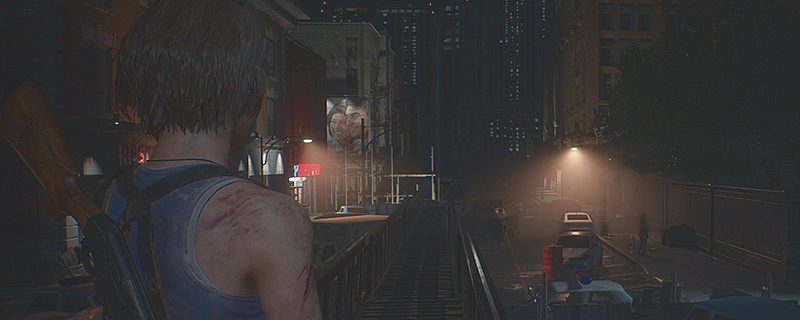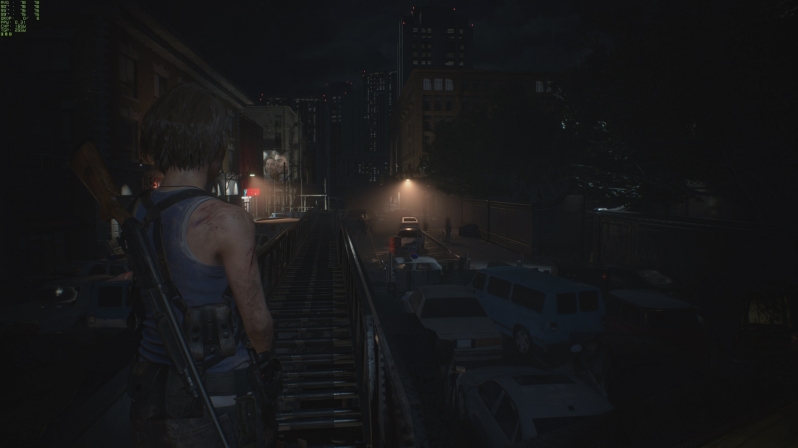Resident Evil 3 Remake PC Performance Review and Optimisation Guide
PC System Requirements
Resident Evil 3 boasts some impressive graphics on PC, especially when the game is cranked to higher resolutions. Thankfully the RE engine is also said to possess a lot of scalability, with the game being reported as playable on an R7 260X, a low-end graphics card that released in 2013.Â
With this in mind, we should expect great things from Resident Evil 3’s Remake. That said, we need to see how the game performs on our own hardware before we can verify Capcom’s hardware claims. If these hardware specs are accurate, anyone who can run RE2’s 2019 remake will be able to run RE3.  Â
MINIMUM:
Requires a 64-bit processor and operating system
OS: WINDOWS® 7, 8.1, 10 (64-BIT Required)
Processor: Intel® Core™ i5-4460 or AMD FX™-6300 or better
Memory: 8 GB RAM
Graphics: NVIDIA® GeForce® GTX 760 or AMD Radeon™ R7 260x with 2GB Video RAM
DirectX: Version 11
Network: Broadband Internet connection
Storage: 45 GB available space
RECOMMENDED:
Requires a 64-bit processor and operating system
OS: WINDOWS® 10 (64-BIT Required)
Processor: Intel® Core™ i7-3770 or AMD FX™-9590 or better
Memory: 8 GB RAM
Graphics: NVIDIA® GeForce® GTX 1060 or AMD Radeon™ RX 480 with 3GB VRAM
DirectX: Version 12
Network: Broadband Internet connection
Storage: 45 GB available space
Graphical Options – The Tech That Underpins Resident Evil 3
Resident Evil 3 is a great looking game; it’s hard to argue otherwise. Yes, the game doesn’t push the graphical envelope to new heights, but the game offers a trait that is rare in a lot of modern PC games. Resident Evil 3 looks great regardless of the title’s graphical preset, providing impressive visuals even when using the game’s lowest “Performance Priority” preset. It’s not often that a game’s lowest preset can deliver on both the performance and graphics fronts.Â
When navigating Resident Evil 3’s graphical options menu, we found that the game was a breeze to configure, with easy navigation on keyboard/mouse or with a gamepad. Every graphical option also sports simple info boxes which can help users judge each setting’s impact on Graphics Memory, Processing Load, Image Quality, Model Quality, Lighting Quality and Graphical Effects Quality. This feature will allow players to judge the graphical and performance impact of specific options quickly.Â
Another neat inclusion within the game is the title’s resolution scaler, which can be used to subsample or supersample the game to increase the game’s performance or increase the game’s graphical detail respectively. This option is listed as “Image Quality” and is set to 100% by default, with means that the game runs at the user’s chosen/native resolution.Â
Our only fault with Resident Evil 3’s graphical options menu is the game’s “Graphics Memory” slider, which produces data that isn’t useful to end-users. The game doesn’t need this much VRAM, though our theory is that the game can cache up to that much VRAM to keep game textures in memory. In reality, PC gamers don’t need more than 8GB of memory to run this game, even at resolutions like 4K. Â
AMD Tech Within Resident Evil 3Â Â
Resident Evil 3 is an AMD co-branded game, currently shipping for free with Radeon RX 5500M/5500/5500 XT, RX 5600M/5600/5600 XT, RX 5700, and RX 5700 XT graphics cards. This offer only applies at participating retailers while AMD’s current “Raise The Game” bundle is ongoing. Â
AMD has been working with Capcom to help the developer implement specific features within Resident Evil 3, though sadly neither Capcom or AMD has gone into great detail about how these features impact the game. Both DirectX 12 and DirectX 11 are present within Resident Evil 3 (See Page 4 of this review for more info), so perhaps AMD’s software advantages lie within that API.Â
AMD has informed us that Resident Evil 3 contains FidelityFX CAS, a hardware-agnostic dynamic sharpening filter that improves details in low-contrast areas to improve image clarity, and support for AMD’s Radeon FreeSync Premium Pro technology.Â
Resident Evil 3 boasts a variety of graphics options, with the game also sporting a variety of graphical presets, which include “Performance Priority”, “Balanced”, “Graphics Priority” and “Max”. The meaning of each preset is fairly self-explanatory.Â
Lower settings that Resident Evil 3’s “Performance Priority” preset are available, but the majority of the game’s remaining options have a minimal performance impact and are work keeping turned on due to their overall effect on the game’s visuals.Â
Film Grain and Chromatic aberration are two graphical features that should be turned on or off depending on your preference. Both effects are well implemented and add to the game’s intended style, but we can understand why many PC players would prefer to turn these settings off to have a clearer final image with less distortion.Â
Resident Evil 3 also features an interlacing feature, which simulates an interlaced screen. This feature will dramatically increase the game’s performance, as it lowers the game’s effective resolution. Unlike Resident Evil 2’s implementation of this feature, Resident Evil 3 doesn’t exhibit the same strange graphical artefacts as its predecessor. This makes the feature a lot more usable, though the game won’t look as good as a native resolution presentation. That said, the game still looks great. This is a sign of some clear evolution within Capcom’s RE Engine.Â
| Â | Performance Priority | Balanced | Graphics Priority | Max Preset |
| Anti-Aliasing | TAA | FXAA+TAA | FXAA+TAA | FXAA+TAA |
| Texture Quality | Medium (0 GB) | High (0.5 GB) | High (1 GB) | High (8 GB) |
| Texture Filter Quality | Medium (Trilinear) | High (ANISO x4) |
High (ANISO x16) |
High (ANISO x16) |
| Mesh Quality | Low | Medium | High | Max |
| Shadow Quality | Min | Medium | Max | Max |
| Shadow Cache | On | On | On | On |
| Screen Space Reflections | Off | On | On | On |
| Subsurface Scattering | Off | On | On | On |
| Volumetric Lighting Quality | Low | Low | Medium | High |
| Particle Lighting Quality | High | High | High | High |
| Ambient Occlusion | Off | SSAO (Set Areas Only) | SSAO | HBAO+ |
| Bloom | On | On | On | On |
| Lens Flare | Off | On | On | On |
| Motion Blur | On | On | On | On |
| Depth of Field | On | On | On | On |
| Lens Distortion | On (+ Chromatic aberration) | On (+Chromatic Aberration) | On (+Chromatic Aberration) | On (+Chromatic Aberration) |
|
FidelityFX CAS + Upscaling |
On | On | On | On |
 Â




